I cannot tell you the number of times that I have been asked, “Why do you lay down on the ground in the cow piss and poop to take pictures?” It seems like after every show that I go to someone has taken a picture of me laying on the ground taking pictures. I figured that in order to answer everyone’s questions and explain it in more detail, I would write an article about it. Here goes.
When I first launched the Bullvine, we did not cover many shows, so we had to use professional side shots of the animals, instead of having pictures of the cows how they looked at the show. Then, as we grew, we started attending more shows and decided that we would start covering them in more detail. With that came the need for pictures. For years, I have been a big fan of the photography work that Han Hopman has been doing for Holstein International. (Read more: Han Hopman: Shooting Straight at Holstein International)

He has taken some of the most iconic shots the show ring has ever seen. Therefore, when we started to cover shows here at The Bullvine, we decided that we wanted to do more photos like Han. In order to achieve this, I first started by looking at Han work and seeing exactly how he was achieving such fantastic results. I went out and purchased a $500 Canon camera and started to learn about photography. One of the first things you learn is how to set up the camera to achieve the best results. The camera settings can often be found in the META Data of each photograph. So I found myself looking at Han’s photographs to see how he was setting up his camera. This gave me great insight into the technical part of the process but certainly left much room to learn the artistic side.

Han Hopman always get’s his shot including this one of Eastside Lewisdale Goldwyn Missy & RF Goldwyn Hailey, Grand Champion and Reserve Grand Champion at Royal Winter Fair 2011.
While Han has been the first to employ this method in dairy cattle show ring photography, it has been a very popular technique in sports photography for many years. Sports Illustrated, known worldwide for their excellent photos, has been using this technique since the 1970’s when Walter Ioos started doing this in order to differentiate his photographs. It also turned out to be a great contributor to the early success of Sports Illustrated.
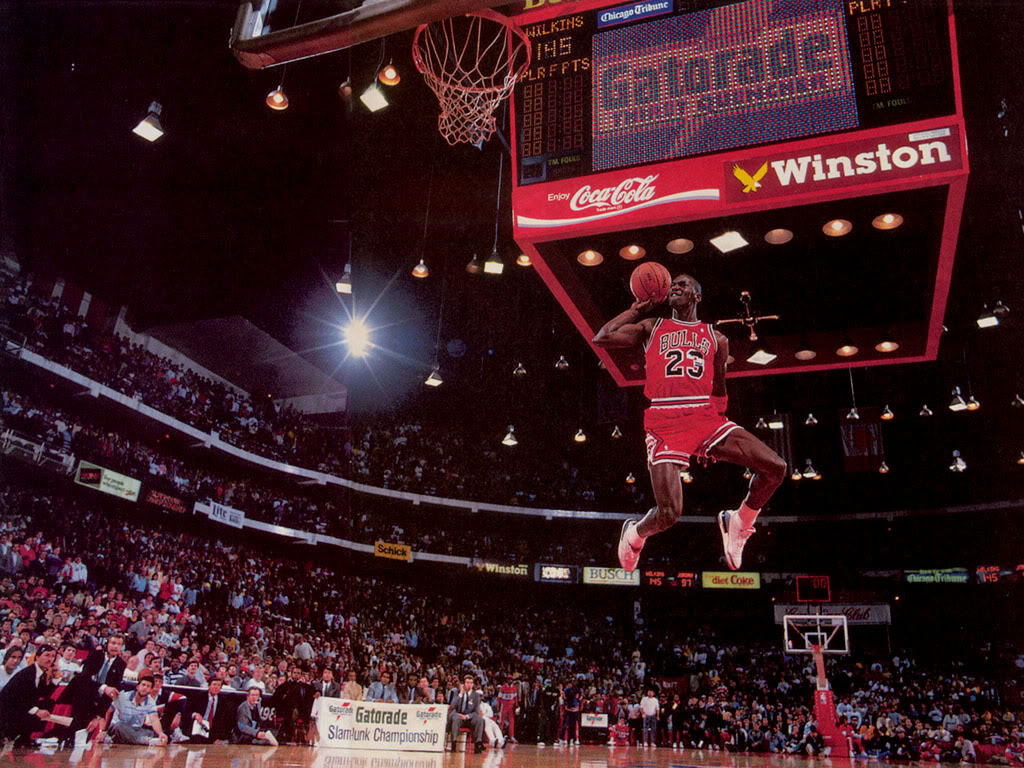
Walter Iooss’ photos and collages of Michael Jordan featured in Sports Illustrated cover story celebrating the basketball icon’s 50th birthday
Having looked at what Han has been doing, and how Sports Illustrated used the power of differentiated photographs to grow to be the largest sports magazine in the world, I figured that we here at the Bullvine should do the same. Over the past two years, I have been working at learning this technique and using it and other lessons to create differentiated photographs for us here at the Bullvine.
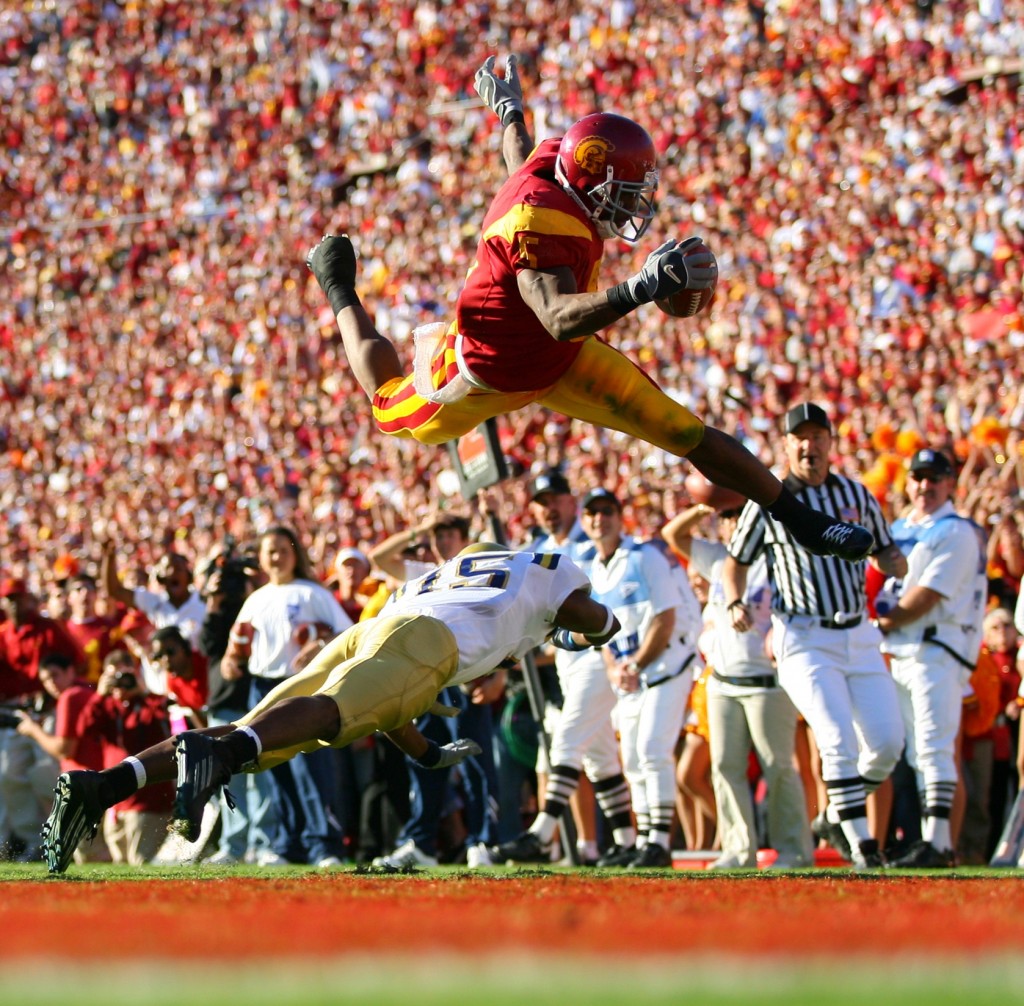
This is a low-angle shot by Sports Illustrated’s Peter Read Miller. The camera resting on the ground.
First let’s clear things up. I often have conversations with other show ring photographers about this very issue. Many comment that they prefer to do event coverage photographs instead of cover shot photographs. For that reason, you will not find them lying on the ground to get the type of shots Han has made so popular. In doing regular event coverage photography instead of trying to get 3-4 cover shots, you are more likely aiming to get 5-10 pictures per class so that viewers can get a good understanding of what each animal in the class looked like and so that the viewers of the photographs could make their own judgement call on each animal. This means you don’t have as much time to set up for each photo, as you need to always be moving and getting the required shots. Add to that the fact that most publications are posting in real time to their website with placings, and here at the Bullvine we are also posting to Facebook and it can be very hard to stop and pose each photo. The challenge with conventional event coverage photographs is that they are actually not really giving you a good representation of the animals. That is because, when taking a regular event coverage photograph, you are shooting down on the animal (as most photographers are taller than 5 feet tall/60 inches). This causes the level of distortion that is actually unbecoming to the animal. Combine that with the fact that each camera and lens comes with a certain level of distortion and the pictures you see in typical event coverage are not as accurate as one would think.
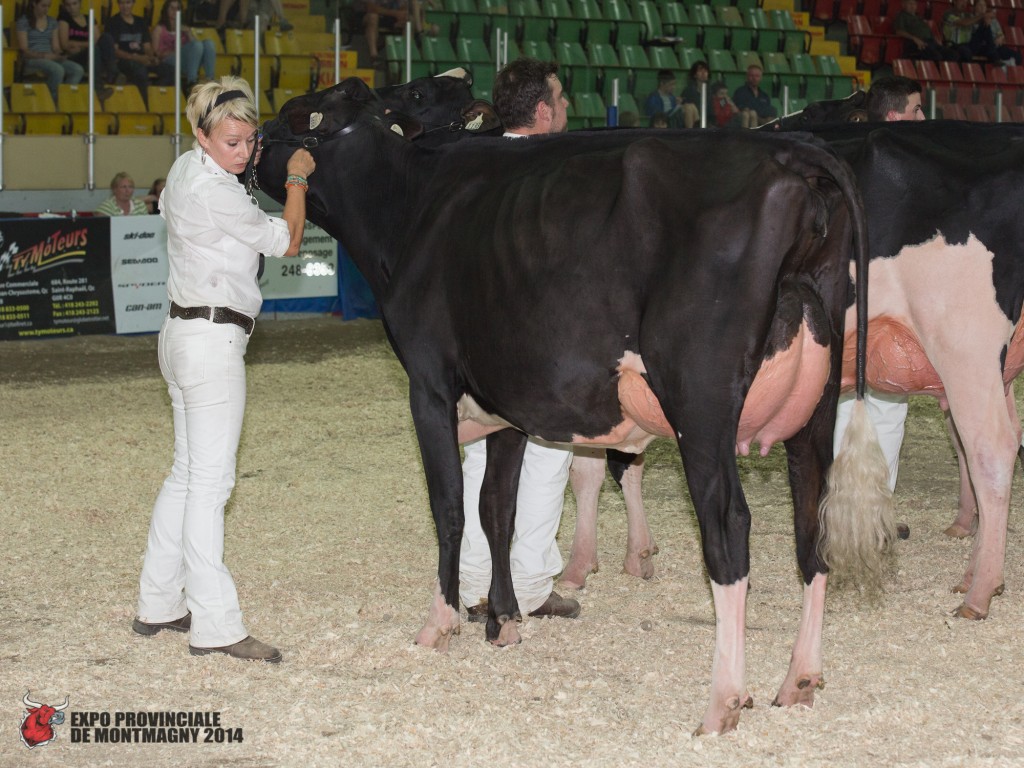
Picture taken at standing height
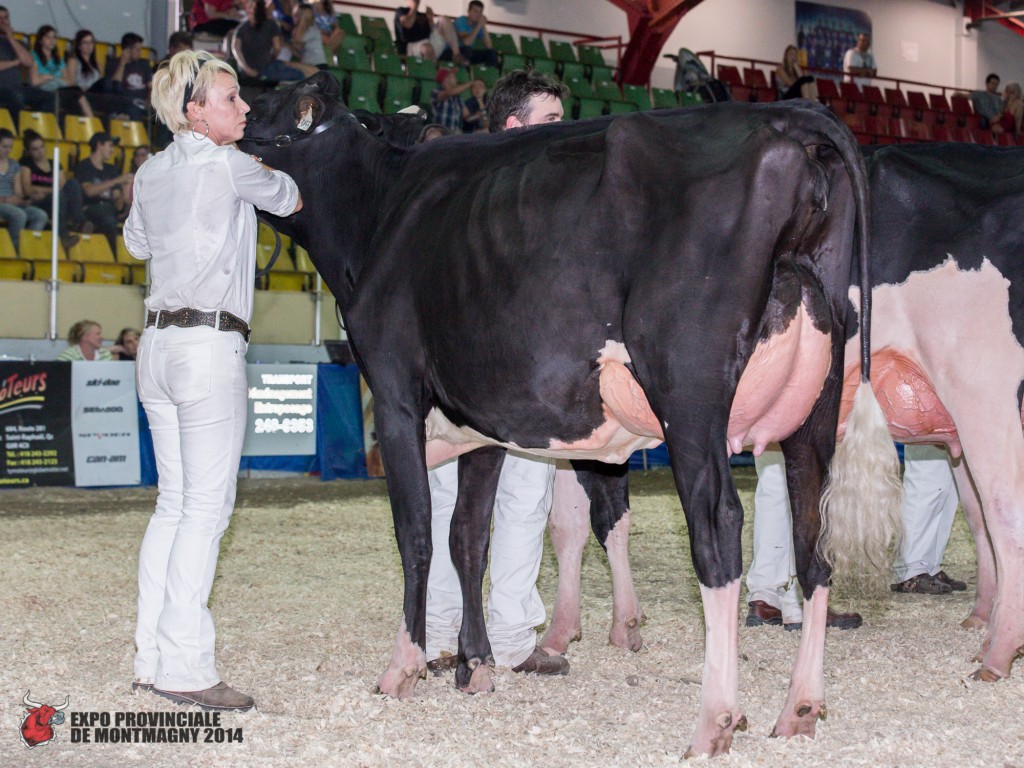
Picture taken at about 30 inches off the ground.
The best viewing angle for the most accurate evaluation of an animal is to have a camera and lens approximately at the middle of the animal. So, for a 60 inch cow, you should have the lens at about 30 inches off of the ground. For most photographers, that means they would need to get at least down on one knee in order to get the best shot. This is something that many do not choose to do.
Now Han has taken this technique to a whole new level, where he prefers to get down on the ground as low as possible. This works great when shooting cattle from long distances as it makes the cows seem larger than life and provides very impressive cover shots. However, as I have learned the hard way, in the past two years that I have been doing this, when these photos are taken at close range, you will find that the cows start to look quartered. So there is certainly an art form to this photography.
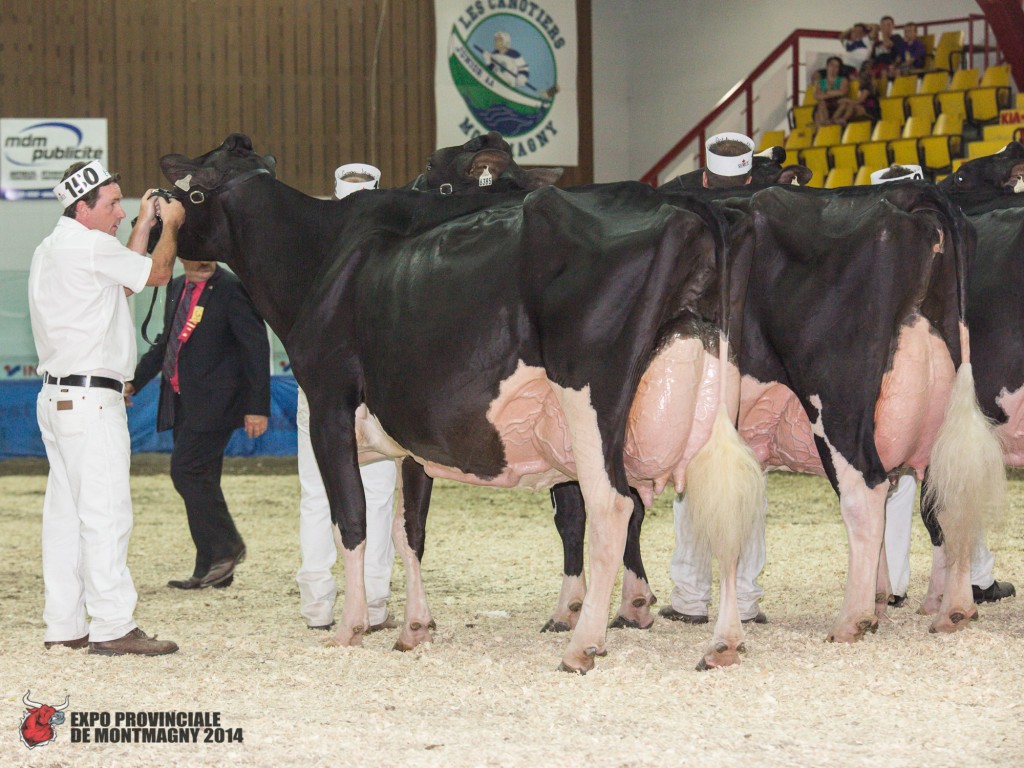
Picture taken at about 30 inches of the ground
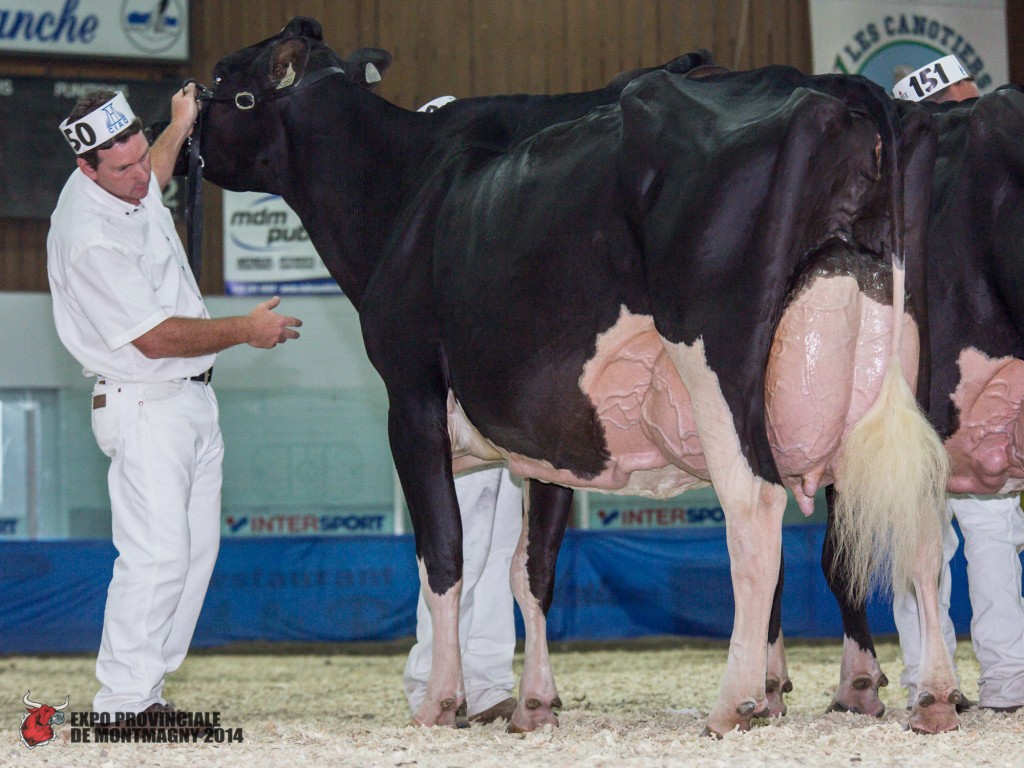
Picture taken at ground level
One of the things I quickly learned is that not all North American shows have iconic environments to create these magnificent photographs. Most dairy cattle shows in North America take place in dark arenas that don’t have very picturesque backgrounds, unlike those in Europe that have a custom environment which helps in producing outstanding photographic results. The other challenge I learned is that we are typically shooting in low light, with high color cast so certainly shows are a tricky place to get great shots. This is where I have employed and benefited from the help of others. I started with staff photographers I work with in my main company who taught me the technical side. It meant combining many conversations with the likes of Han and Randy Blodgett and two outstanding young photographers, Laurens Rutten and Bradly Cullen, as well as working through much trial and error. I have slowly learned how to overcome these challenges. Along with that came the understanding that I would have to invest in new equipment. What started out as a $500 investment has now become a $30,000 investment complete with converting my garage into a studio in order to learn even more. We have also now added a video studio for Bullvine TV (Read more: Introducing BullvineTV – The Dairy Breeding Industry Now Has Its Own Channel)
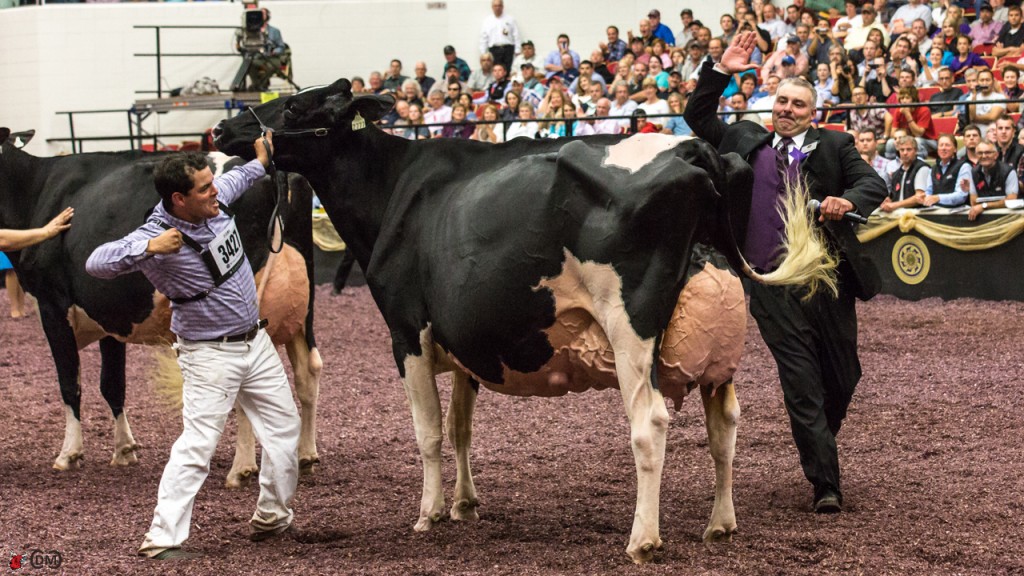
The lesson that I learned from many of the professional portrait photographers I have been fortunate to work with is that you need to develop your own style in order to stand out. For me, that started out with wanting to catch those moments that breeders will never forget. It meant being able to capture those moments when a cow is named grand at Expo, or when a father and son embrace after the Royal. These are the moments that people will never forget, and pictures from these events have proven to be viral on social media.
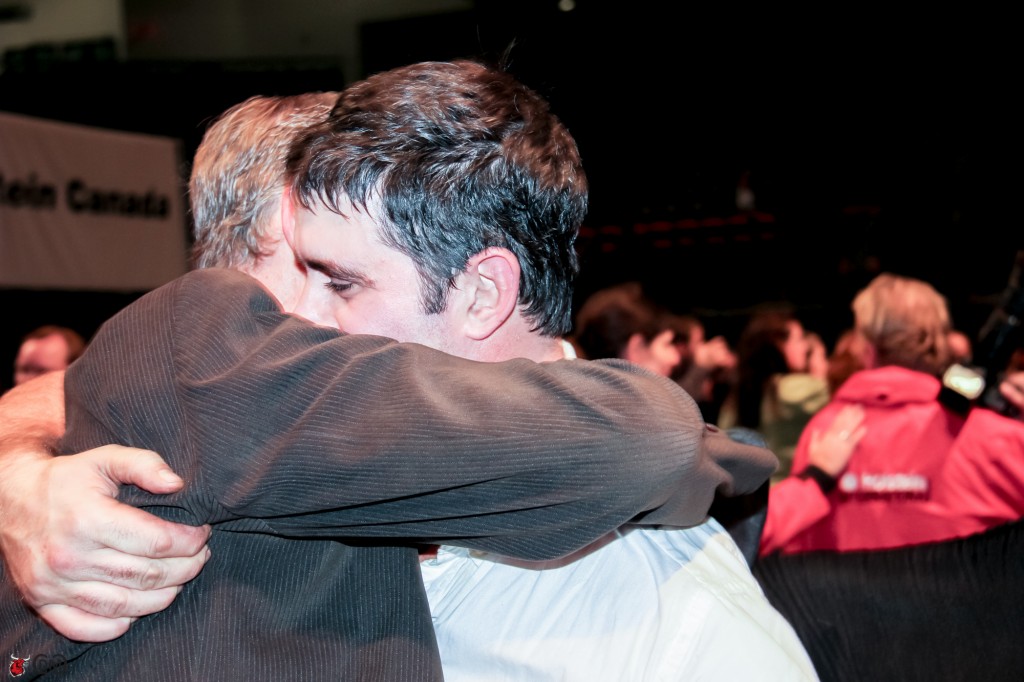
One of the things I found as our pictures become more recognizable, is that more and more exhibitors where asking me if I had been able to get a picture of their animals. In the beginning, since more of my photographs turned out somewhat less than good, it meant that I didn`t have time to get the shots all breeders were looking for. However, more recently, as our experience has grown, we now strive to get a picture of every animal that enters the ring, and this is something we have been very close to achieving. With the last Quebec Summer Show, we posted over 300 photographs from a show that had 148 animals. (Read more: Expo provinciale de Montmagny) The interesting part is that instead of just doing event coverage like most publications are still doing, we are now able to produce shots that showoff the animals in the best possible way. This has led to the Bullvine`s photos being the most used photos for ads and magazine covers in the dairy breeding industry.
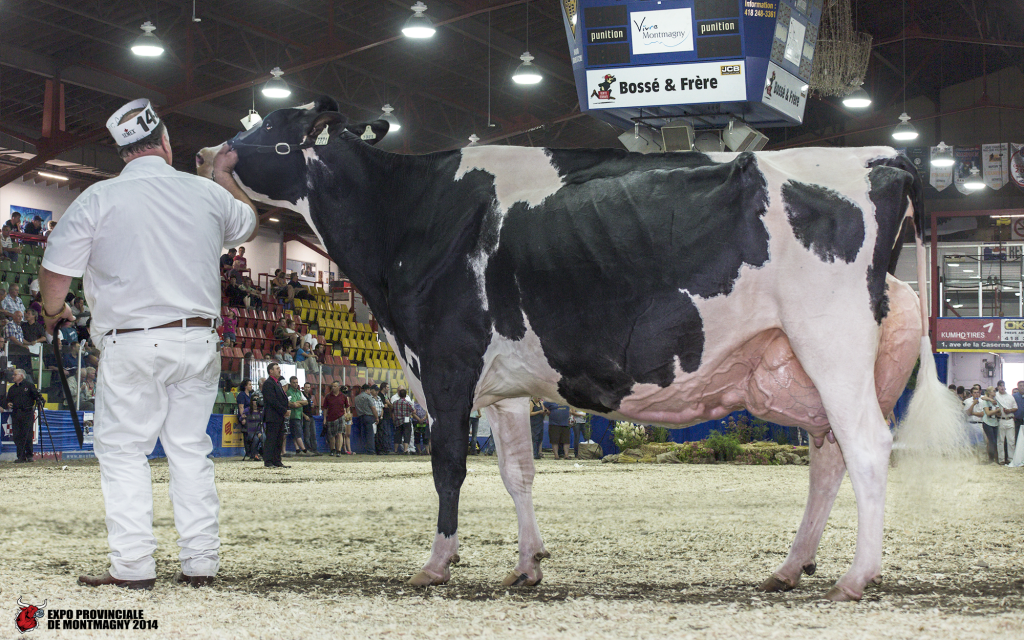
The Bullvine Bottom Line
For me being able to be in the middle of the ring at Expo, the Royal or pretty much any other dairy cattle show is a real honor. Exhibitors go to a great deal of effort 365 days a year, and I love being able to see up close just which cows look good and which ones are not at their best on that day. I feel that it`s my responsibility to the breeders that view our photographs to provide them with the best photos possible. Also the reason I don`t charge breeders and exhibitors for the use of my photographs, as I have not paid for the right to take the photographs, how do I have the right to charge them? In order to achieve this it not only means having the best equipment we can afford, but it also means being willing to get down on the ground in order to get the angle and perspective that captures the best possible moment. Often this means laying in the piss and poop, as the angle that allows you to get to see the cows fore and rear udder may not be one that is in the cleanest spot in the show ring. Sure I could move to a different angle, but then I would be cheating the breeders who go to so much effort to bring their animals to the show as well as those who like to view our pictures online. It`s not about how pretty I look, but rather, what can I do to capture that animal looking her best! If that means laying in piss and poop, so be it. Besides how many true dairy farmers do you know that are afraid to get a little poop on them?
Check out more photographs in our gallery section

Get original “Bullvine” content sent straight to your email inbox for free.

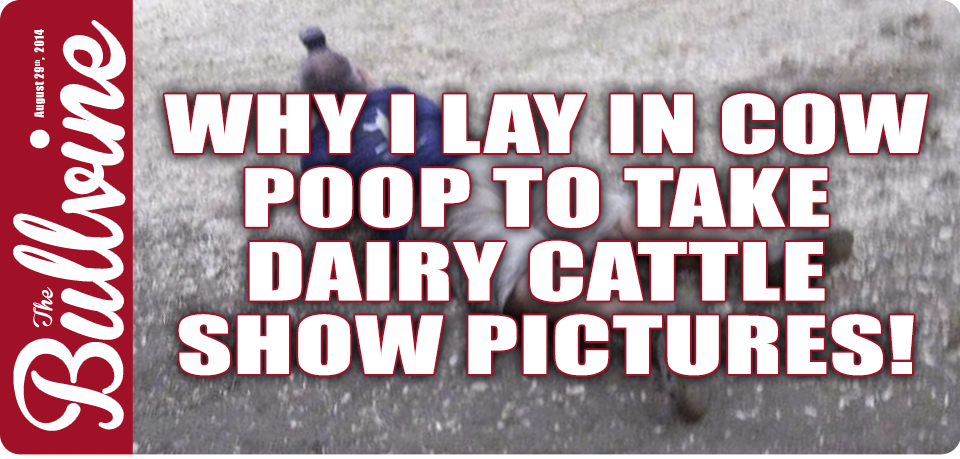














Leave a Reply
You must be logged in to post a comment.